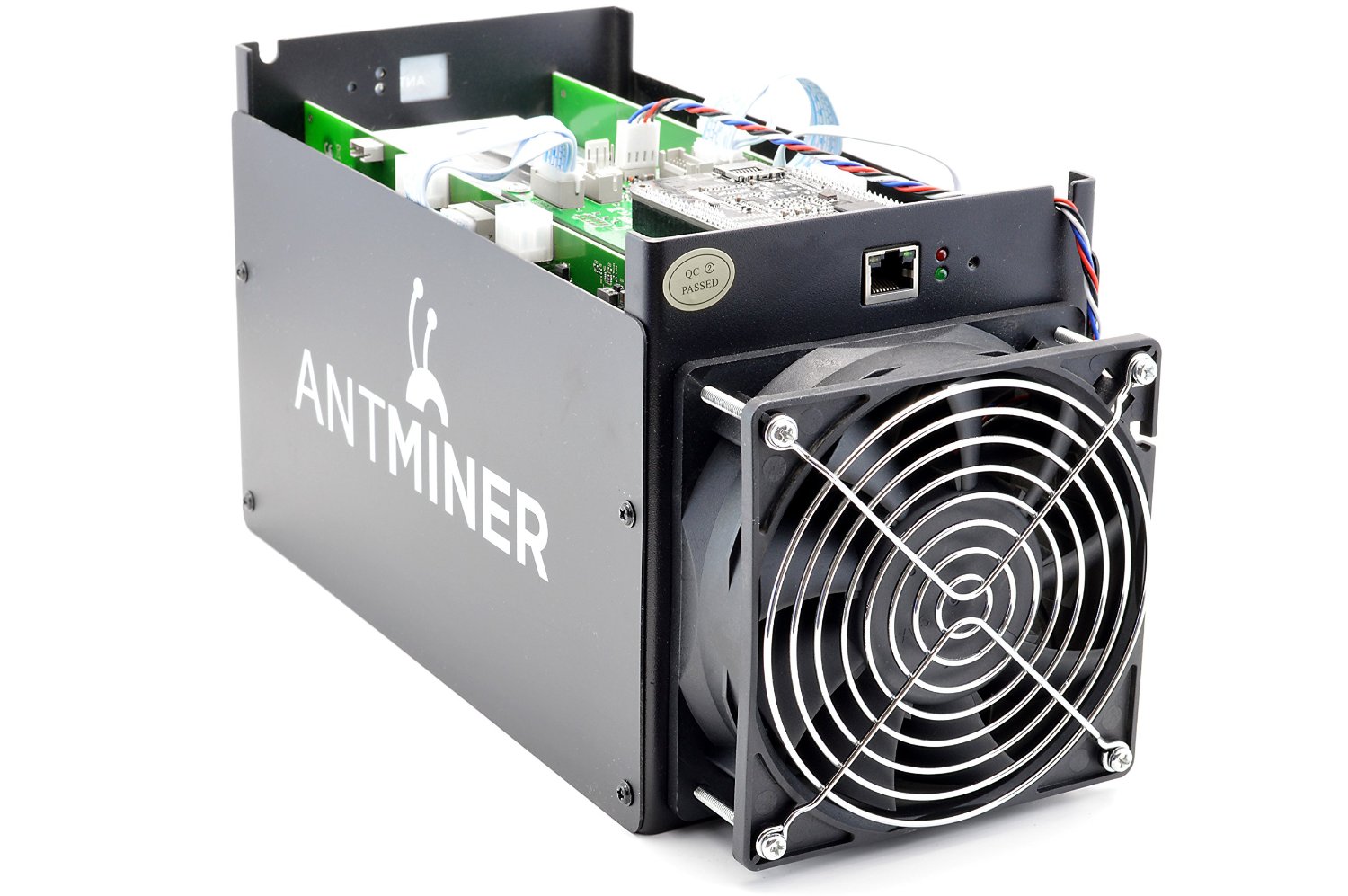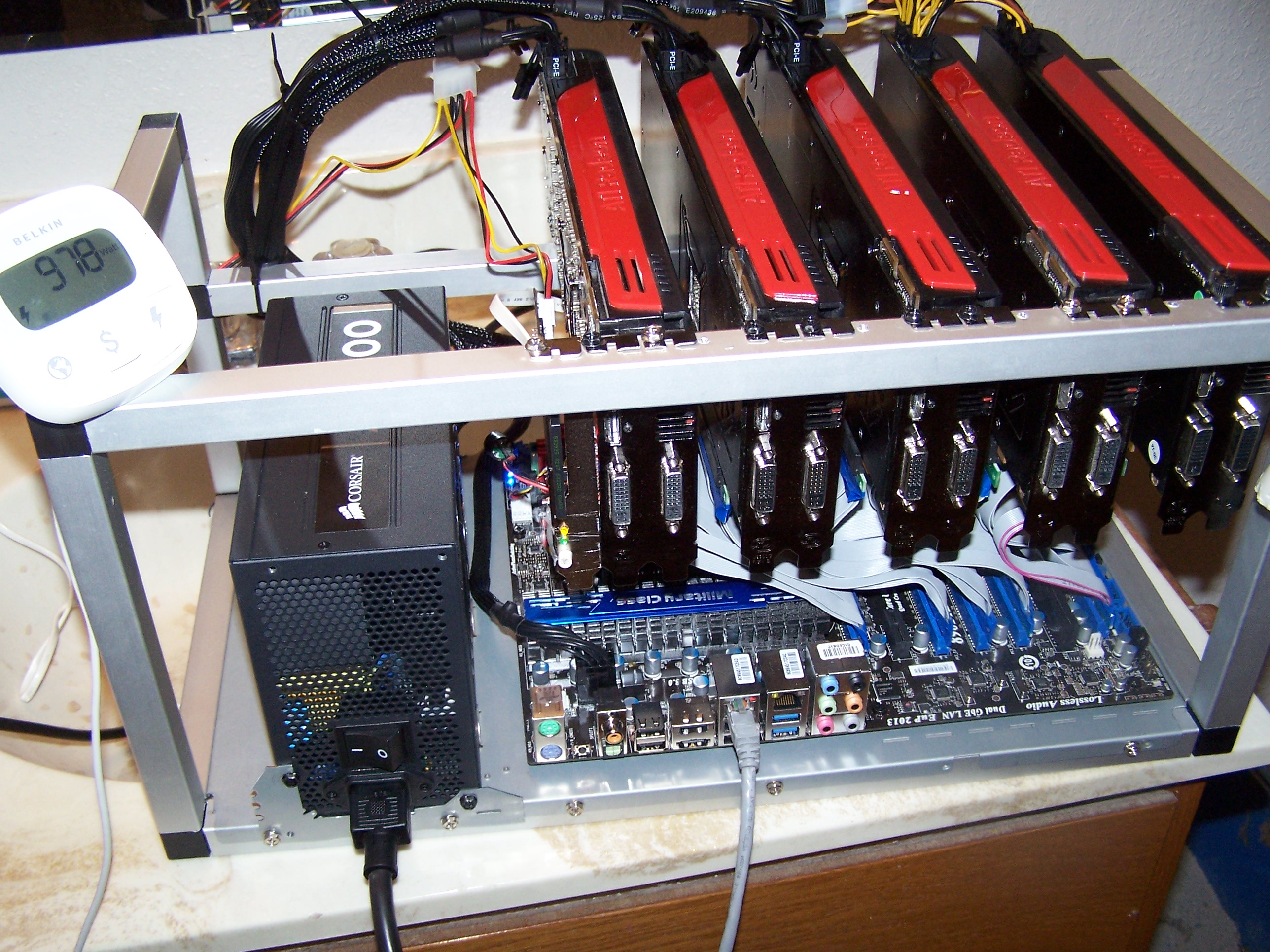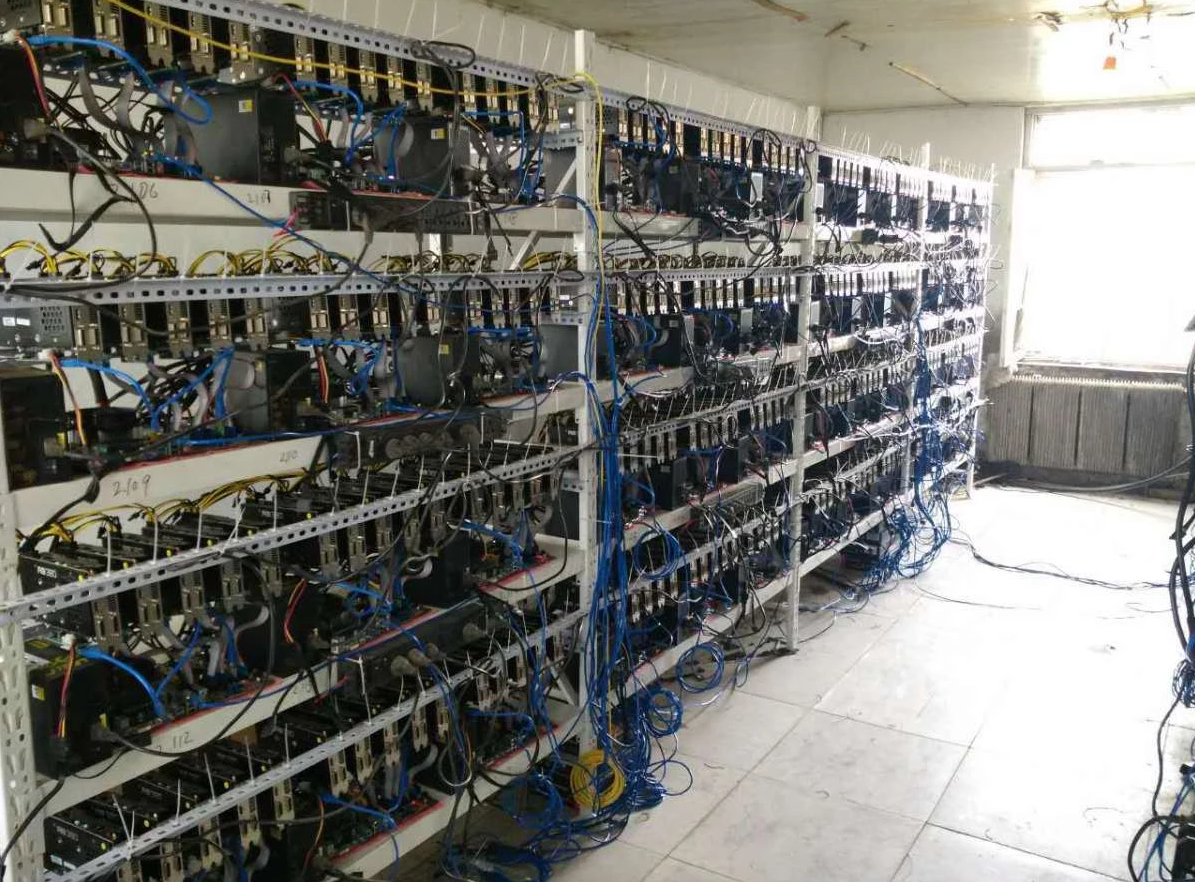How Bitcoin and cryptocurrencies are hurting gamers
Bitcoin has gone from proof of concept to a major alternative financial movement.

A lot of gamers have been caught off guard by the latest happenings in the world of cryptocurrency. The result has been radically altered graphics card prices, with AMD's RX 400/500 series cards in particular being out of stock at most places. If you haven't heard of Bitcoin or cryptocurrencies, don't feel bad—while some general awareness of it now exists, many people involved with the movement still don't really know what it is, why we need it, or if we should even want it. The brief synopsis goes something like this, and I'm intentionally skipping a lot of the complexity.
A brief history of Bitcoin
The core idea is to have a currency backed by the power of cryptography (ie, math), rather than governments, gold, or some other physical good. Neal Stephenson's book Cryptonomicon contained an idea like this back in 1999, and in 2008 Satoshi Nakamoto introduced Bitcoin to a cryptography mailing list, with the software going live January 2009. I'm going to focus specifically on Bitcoin for a moment, but most of what I'll say applies (with some exceptions I won't get into) to all cryptocurrencies.
Bitcoin is created via a sort of distributed computing competition, dubbed 'mining' after the gold rush, where based on your computational contributions you have a chance of 'finding' a block of Bitcoins. This happens every 10 minutes on average, and the more you participate the higher the chance of mining a block. The block reward started at 50 Bitcoins (BTC) and halves every 210,000 blocks (about four years)—it's currently 12.5 BTC. Mathematically, that means there will never be more than 21 million BTC.
The block rewards exist to entice people to run the software, because mining also secures the Bitcoin network. Basically, the difficulty of mining a block scales based on the total speed of the network, called the hashrate, and someone would need to control more than 50 percent of the hashrate to have a reasonable chance of hacking the Bitcoin network. So the more people (processors) running the hashing algorithms, the more secure the network, and the harder it is to find a block solution.
The Bitcoin network hashrate has gone from tens of millions of hashes per second during its first year, to billions, then trillions, and it currently sits at nearly five quintillion hashes per second, or 4.8 EH/s (that's exahash per second, with SI prefixes now used). The reason for the increase in hashrate isn't just more people participating—the processors used for hashing have also gotten much faster.

Mining started with CPUs, then moved to GPUs, FPGAs, and eventually to custom ASICs (Application Specific Integrated Circuit)—processors designed purely for Bitcoin's hashing function. The fastest Bitcoin ASICs now do around 100 GH/s per chip, which is orders of magnitude faster than the best CPU or GPU. But they don't use just one chip—a typical Bitcoin ASIC miner can have anywhere from dozens to 100 or more chips in it, so Bitcoin mining hardware can do up to 14 TH/s. That used to be a lot, but now it means about $15 per day, give or take.
The biggest gaming news, reviews and hardware deals
Keep up to date with the most important stories and the best deals, as picked by the PC Gamer team.
Why are graphics card prices skyrocketing?
What does any of this have to do with graphics cards? Here's where things get a bit convoluted. Bitcoin was released as open source software, and it uses the SHA256 algorithm for hashing. Anyone is free to take the source code and modify it, which has led to the creation of more than a thousand (and counting) alternative cryptocurrencies. Many of these are worthless, but some of them have modified the software in unique and useful ways. Ethereum, Ripple, and Litecoin are the next three largest cryptocurrencies right now, and each offers a different take on block rewards, hashing algorithm, and more. (Okay, Ripple is very different from the other three, but I'm not getting into the nitty gritty right now—Google is your friend if you want to know more.)

The change in hashing algorithms is the biggest factor in what sort of hardware can be used to mine the coin. The ASIC name says most of what you need to know: it's application specific, and in the case of Bitcoin, the ASICs are focused almost exclusively on running the SHA256 algorithm. A CPU in contrast can run any algorithm, but generally not as fast as an ASIC built for the same task. GPUs are a bit of a middle ground, in that they're far more programmable than an ASIC, but there are certain algorithms that aren't suitable for the hardware. In the cryptocurrency world, however, very few algorithms exist that can run on a CPU but not on a GPU, meaning graphics cards are the de facto mining hardware for any cryptocurrency that doesn't (yet) have an ASIC.
We've now seen several spikes in graphics card prices over the years, thanks to cryptocurrencies. In mid-2011, people started buying all the Radeon HD 5870 cards they could find for Bitcoin mining (this was before ASICs). In late 2013 and early 2014, AMD's brand-new Hawaii GPUs (R9 290/290X) became nearly impossible to find at MSRP, thanks to Litecoin, other alt-coins, and a massive jump in Bitcoin prices that increased the value of all associated cryptocurrencies. The R9 290 as an example was supposed to cost $399, but for a while the lowest price was closer to $650. And now, in mid-2017, we have another cryptocurrency mining surge going on, driven in large part by Ethereum, but Bitcoin and other cryptocurrencies are playing a role as well.
Are these cryptocurrencies actually useful?
What do you do with these cryptocurrencies, and do they have any value? Some might say no, but scarcity, the lack of bank/government control, and the pseudo-anonymous nature has given them plenty of worth in the eyes of others. Anyone can create a wallet, a 26-35 character address (sometimes more, depending on the coin) that's the public part of a public-private key pair, with the owner keeping the private key. Cryptocoins can be transferred between wallets, protected by the power of cryptography, allowing digital funds to move around the world in a matter of minutes.
Today, a single Bitcoin is valued at around $2,500 (though pricing is admittedly highly volatile), and more than 100,000 vendors accept BTC, including Newegg. You can also buy gift cards using BTC that will work at many other online stores, including Amazon. But it's not all sunshine and lollipops.

There have also been plenty of thefts, scams, and other shady goings on in the cryptocurrency world. Cryptocurrencies end up being a lot like digital cash, meaning it's very difficult to trace or intercept. Money laundering, drugs, and other illicit practices have used Bitcoin, and ransomware viruses exist that encrypt hard drives and demand BTC to get the unlock code and software. That's both the blessing and curse of pseudo-anonymous currencies.
But despite years of people declaring the death of Bitcoin and others hailing it as the promised Messiah, for most people Bitcoin remains a fringe curiosity. It's currently possible to make money via mining, but the power cost is nearly as much as the value of the BTC mined. Instead of becoming a currency free of the controls of governments and banks, Bitcoin is now largely controlled by a small collection of interested parties who have heavily invested in securing the network. And ironically, greater acceptance of Bitcoin will likely come only with additional regulations.
Which leads back to GPUs again, where it's more profitable to mine something other than Bitcoin using your GPU, then trade it for Bitcoin—and some software even supports auto-switching between various mining algorithms to select the currently highest paying option. No surprise, individuals and companies have sprung up to build mining farms of GPUs to take advantage of this fact.
If you're interested in trying to build your own mining farm to get rich off cryptocurrencies, there are many others trying to do the exact same thing right now—this is why many have accused Bitcoin and other cryptocurrencies of being Ponzi schemes. Most of you are here because you're interested in PC gaming, and you're probably wondering when the madness will stop so you can buy an RX 580 or GTX 1070 at something closer to MSRP. Having been through this a couple of times before, I have a few hopeful insights.
Patience is a virtue, even in games
Every mining boom is traditionally followed by a mining bust—some people inevitably strike it rich, but many others will struggle to break even, and some of these will give up and quit. In the case of cryptocurrency mining, however, selling used hardware to recoup some of the initial investment means there will often be a glut of used graphics cards in the future. The R9 290/290X that were going for $650+ in early 2014? A year or so later, the R9 290 (and the subsequent R9 390) was readily available for under $300. The driving factor was that Bitcoin prices had dropped, mining became unprofitable (because mining requires a lot of power), and people lost interest in buying up all the GPUs.
Even if Bitcoin and Ethereum prices remain high, however, the algorithms are designed to respond to large increases in miners by increasing the difficulty of mining. In other words, there's a limited amount of Ethereum, Bitcoin, Library, Zcash, etc. to go around, and if the number of participants doubles, each person will earn half as much. And if the cryptocurrency prices begin to drop—and there are indications that's already happening—then we should see a transition sooner rather than later. But there are a lot of variables, so I won't even venture to guess when we might see AMD's Polaris GPUs back in stock at reasonable prices (for gaming purposes).
In the interim, here are a few things to consider. At present, most miners are going for midrange cards, as they offer the fastest return on investment. An RX 570 4GB at $170 (which was the initial launch price) for example would be able to pay for itself in about 60 days at current rates. Yeah, no wonder every miner and their dog bought as many as they could! RX 580 8GB at $240 would pay for itself in roughly 65 days, GTX 1070 at $350 breaks even in 80 days, and GTX 1060 6GB at $240 is around 85 days. Buy six of those and use PCIe riser adapters to put them into a single system, paired with a high-end power supply, and you have yourself a mining rig. Because the fastest gaming GPUs can use 250W (or more) of power, they're less interesting for miners, as only four or five would run off a single power supply—so the R9 Fury/Fury X was never very popular for mining, and the GTX 1080 and GTX 1080 Ti have also been relatively unaffected.
For gaming purposes, obviously there's no debate between spending $550 on a GTX 1080 vs. $550 on an RX 580—the cheapest in stock price I could find at the moment for either card. The 1080 is substantially faster for gaming purposes, by about 60 percent last time I benchmarked the two cards. In fact, even for cryptocurrency mining you could make the argument that the GTX 1080 offers a better value right now, or at least a similar value. GTX 1080 Ti starting at $700 is also a reasonable option—assuming you're willing to go that high, which most of us aren't.
If you want anything more affordable than that (other than a budget card like a GTX 1050 / 1050 Ti or RX 560 2GB), your best option right now is to simply kick back and wait. Because a GTX 1060 3GB at $300 is a bad value for gaming, period. Companies are also creating mining-specific graphics cards now, cashing in on the craze, but I doubt that will have much impact unless prices are lower than regular gaming cards. Just know that eventually, the harsh realities of economics will kick in and it won't be possible to sustain high graphics card prices.
As for Bitcoin and cryptocurrencies, with a current market valuation of more than $100 billion USD, don't expect Bitcoin and cryptocurrencies to disappear any time soon. They might even be part of our dystopian cyberpunk future. So far, things have been cyclical, much like the stock market, so don't be surprised if this isn't the last time cryptocurrencies cause a shortage of gaming GPUs.
Jarred's love of computers dates back to the dark ages when his dad brought home a DOS 2.3 PC and he left his C-64 behind. He eventually built his first custom PC in 1990 with a 286 12MHz, only to discover it was already woefully outdated when Wing Commander was released a few months later. He holds a BS in Computer Science from Brigham Young University and has been working as a tech journalist since 2004, writing for AnandTech, Maximum PC, and PC Gamer. From the first S3 Virge '3D decelerators' to today's GPUs, Jarred keeps up with all the latest graphics trends and is the one to ask about game performance.


